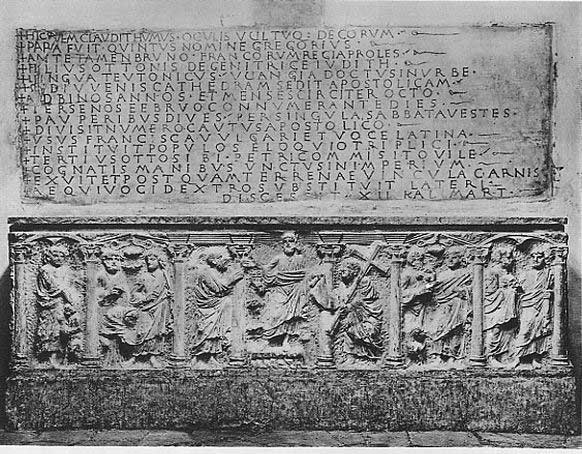|
Al-Qadir
Abu'l-Abbas Ahmad ibn Ishaq (; 28 September 947 – 29 November 1031), better known by his regnal name al-Qadir (, , ), was the Abbasid caliph in Baghdad from 991 to 1031. Born as an Abbasid prince outside the main line of succession, al-Qadir received a good education, including in the tenets of the Shafi'i school of Islamic jurisprudence. He rose to the throne after his cousin, at-Ta'i, was deposed by the Buyid ruler of Iraq, Baha al-Dawla. Although still under Buyid tutelage and with limited real power even in Baghdad, al-Qadir was able to gradually increase the authority of his office over time, exploiting the rivalries of the Buyid emirs and the caliphate's role as a fount of legitimacy and religious guidance. Al-Qadir was able to nominate his own heirs without interference by the Buyids, and was instrumental in securing control of Baghdad for the Buyid emir Jalal al-Dawla. At the same time, he sought champions further afield, notably in the person of Mahmud of Gha ... [...More Info...] [...Related Items...] OR: [Wikipedia] [Google] [Baidu] |
Mahmud Of Ghazni
Abu al-Qasim Mahmud ibn Sabuktigin (; 2 November 971 – 30 April 1030), usually known as Mahmud of Ghazni or Mahmud Ghaznavi (), was Sultan of the Ghaznavid Empire, ruling from 998 to 1030. During his reign and in medieval sources, he is usually known by his laqab, honorific title Yamin al-Dawla (, ). At the time of his death, his kingdom had been transformed into an extensive military empire, which extended from northwestern Iran proper to the Punjab in the Indian subcontinent, Khwarazm in Transoxiana, and Makran. Highly Persianization, Persianized, Mahmud continued the bureaucratic, political, and cultural customs of his predecessors, the Samanids. He established the ground for a future Persianate society, Persianate state in Punjab, particularly centered on Lahore, a city he conquered. His capital of Ghazni evolved into a significant cultural, commercial, and intellectual centre in the Islamic world, almost rivalling the important city of Baghdad. The capital appealed to many ... [...More Info...] [...Related Items...] OR: [Wikipedia] [Google] [Baidu] |
Pope John XV
Pope John XV (, ; died March 996) was the bishop of Rome and ruler of the Papal States from August 985 until his death. A Roman by birth, he was the first pope who canonized a saint. The origins of the investiture controversy stem from John XV's pontificate, when the dispute about the deposition of Archbishop Arnulf of Reims soured the relationship between the Capetian kings of France and the Holy See. Early life John XV was the son of Leo, a Roman presbyter. Before he became pope in August 985, John was cardinal-priest of St. Vitalis. Pontificate John XV's venality and nepotism allegedly made him very unpopular with the citizens of Rome. However, Joseph Brusher finds this unproven, as John XV had little authority in Rome at that time. Crescentius II, patrician of Rome, significantly hampered the pope's influence, but the presence of Empress Theophanu in Rome from 989 to 991 restrained Crescentius' ambition. John was a patron and protector of the reforming monks of Cluny ... [...More Info...] [...Related Items...] OR: [Wikipedia] [Google] [Baidu] |
Pope Gregory V
Pope Gregory V (; c. 972 – 18 February 999), born Bruno of Carinthia, was the bishop of Rome and ruler of the Papal States from 3 May 996 to his death. A member of the Salian dynasty, he was made pope by his cousin, Emperor Otto III. Family Bruno was a son of Otto I, Duke of Carinthia, a member of the Salian dynasty who was a grandson of Otto I, Holy Roman Emperor, and his wife, Judith of Carinthia, most likely a member of the Luitpolding dynasty. He is the only pope who was born in modern Austria, and is sometimes referred to as "the first German pope" or as "the only Austrian pope;" German and Austrian identity was not formed at the time of Gregory's life. Papal election Bruno was the chaplain of his cousin, Emperor Otto III, who presented him as a candidate and arranged his election. Bruno was elected and succeeded John XV as pope, taking the name Gregory V to honour Pope Gregory the Great; he thus became the first pope to choose a regnal name for a reason other than ... [...More Info...] [...Related Items...] OR: [Wikipedia] [Google] [Baidu] |



